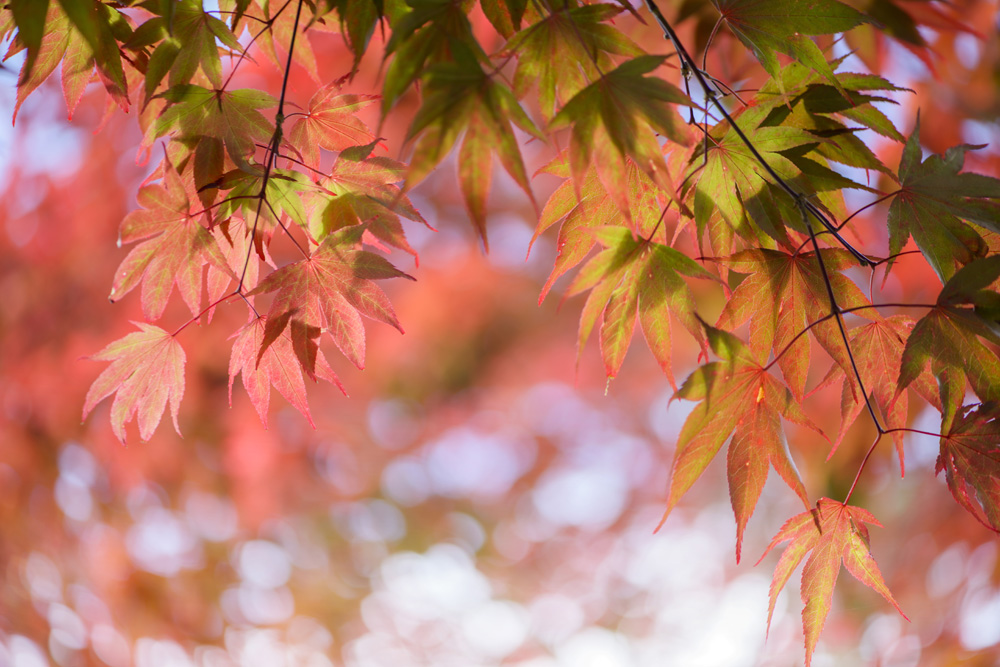Acer ginnala
Common Name
Amur maple

General information:
Amur maple is an excellent, low-growing tree for small yards and other small-scale landscapes. It can be grown as a multi- stemmed clump or can be trained into a small tree with a single trunk up to four to six feet tall. The tree grows about 20 to 30 feet tall and has an upright, rounded, finely branched growth habit which creates dense shade under the crown. Due to excessive branchiness, some pruning is required early in the life of the tree to create dominant major branches. Amur maple can grow rapidly when it is young if it receives water and fertilizer, but it is well-suited for planting close to power lines since it slows down and remains small at maturity.
Amur maple has only started to attain popularity as a bonsai. It is certain to become widely used as it is an attractive, fuss-free maple. It shares the three-lobed leaves of trident maple, but is much more frost resistant. In fact, it is more tolerant of adverse conditions than most other maples. Amur maple also has its brilliant autumn coloration to recommend it. ‘Durand’s Dwarf’ is an especially desirable cultivar for bonsai.
Family:
Aceraceae
Lighting:
Full sun, part sun, but part shade in midsummer and in very hot climates to prevent leaf burn.
Temperature:
Very weather resistant - thrives in zones 3 to 8, but may be grown in somewhat hotter areas if care is taken to prevent leaf-burn or dehydration.
Watering:
Moderate - increase watering during the summer heat, and keep fairly dry in winter.
Feeding:
Weekly for the first month after leafing out, then every two weeks through summer. Use bonsai fertilizer or half strength plant food.
Pruning and wiring:
Acer ginnala takes well to bonsai techniques. It buds back rapidly on old wood, and thus can be cut back quite hard. Its leaves will reduce to under one inch if it is defoliated once every two years in midsummer. New shoots should be pruned through the growing season. Acer ginnala may be wired, but like other maples, may require some protection of the bark.
Propagation:
Cuttings, seed, air-layering.
Repotting:
Soil tolerances include clay, loam, sand, acidic, alkaline, well- drained. Repot in early spring, before bud burst, using a fast-draining soil mix. Young trees may need to be repotted annually. Otherwise, repot every two years, but not in the same year that the tree is defoliated.
Pests and diseases:
Pests:
Amur maple is usually pest-free. Aphids infest maples, usually Norway Maple, and may be numerous at times. High populations can cause leaf drop. Another sign of heavy aphid infestation is honey dew on lower leaves and objects beneath the tree. Aphids are controlled by spraying or they may be left alone. If not sprayed, predatory insects will bring the aphid population under control. Scales are an occasional problem on maples. Perhaps the most common is cottony maple scale. The insect forms a cottony mass on the lower sides of branches. Scales are usually controlled with horticultural oil sprays applied in spring before growth begins. Scales may also be controlled with well-timed sprays to kill the crawlers. If borers become a problem it is an indication the tree is not growing well. Controlling borers involves keeping trees healthy. Chemical controls of existing infestations are more difficult. Proper control involves identification of the borer infesting the tree then applying insecticides at the proper time.
Diseases:
Verticillium wilt symptoms are wilting and death of branches. Infected sapwood will be stained a dark or olive green but staining can’t always be found. If staining can not be found do not assume the problem is not verticillium wilt. Severely infected trees probably can’t be saved. Lightly infected trees showing only a few wilted branches may be pulled through. Fertilize and prune lightly infected trees. This treatment will not cure the problem but may allow the tree to outgrow the infection. Girdling roots will cause symptoms which mimic verticillium wilt. Scorch occurs during periods of high temperatures accompanied by wind. Trees with diseased or inadequate root systems will also show scorching. When trees do not get enough water they scorch. Scorch symptoms are light brown or tan dead areas between leaf veins. The symptoms are on all parts of the tree or only on the side exposed to sun and wind. Scorching due to dry soil may be overcome by watering. If scorching is due to an inadequate or diseased root system, watering may have no effect.
Bibliography:
“Bonsai” by Resnick
“Complete Book of Bonsai” by Tomlinson
“The Hearst Garden Guide to Trees and Shrubs” edited by Thomas USDA Fact Sheet ST-14
Compiled by Sabrina Caine Edited by Thomas L. Zane
